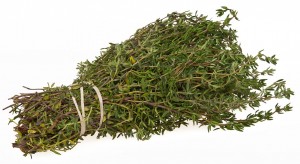It’s almost winter, so why not grow an herb garden?
November 16, 2015Most of the trees have dropped their leaves, the days are shorter, the nights longer and the doldrums of winter are around the corner. Wait, weren’t we just picking basil and tomatoes?
The garden may be long gone, but you can still enjoy some greenery indoors. Growing veggies might be a stretch, but windowsill herbs are relatively easy to raise — if you take the right steps.
The first thing is to ensure that they’re getting plenty of light. You can’t put herbs in the shade and expect them to thrive. If you don’t have a window that faces south and gets light most of the day, you’ll have to supplement with a plant light – available at most hardware stores, big box stores and through online merchants. Even if your plants are getting plenty of winter su nlight, the folks over at garden.org say it’s probably not enough because the intensity of winter light doesn’t stack up to summer sunshine.
nlight, the folks over at garden.org say it’s probably not enough because the intensity of winter light doesn’t stack up to summer sunshine.
Secondly, and just as important, is the amount of water you’re giving the plants. Too much, and you’ll cause root rot. Too little and you’ll end up with a desert in a pot. To paraphrase Goldilocks, it needs to be just right. An unglazed clay pot — with holes in the bottom — filled with soil that has some sand and perlite mixed in should do the trick. Set your pot in a saucer — but elevated, so that any water that drains does not touch the bottom of the pot.
Check the soil with your finger. If it’s damp, it doesn’t need water. Experts agree that over-watering is the most common reason plants give up the ghost. “Water less and more thoroughly,” states Conrad Richter at garden.org. You should let the soil dry out between waterings.
In the same article, Richter says nutrients are critical, too. Unlike plants growing outdoors, potted plants have a limited supply of food. A bit of liquid fertilizer or organic fish emulsion used once a week, he states, will keep your herbs happy.
Rodale points out that you can skip the soil and grow some herbs in water, too.
You can put a few cuttings in water, or even try your luck with some from the grocery store or farmers’ market. “Basil, mints, pineapple sage, oregano, sage, stevia, thyme, lemon balm” and others do well, Rodale states. “To grow herb cuttings in water, select young, healthy, actively growing herbs with stems about six inches long. Cut them off the plant with a very sharp pair of scissors or pruners (for purchased herbs, cut off the bottom of the stem to leave a fresh, clean cut). Strip off all of the leaves from the lower two-thirds of the stem (saving them for cooking, too).
“Fill a clean jar that is deep enough to cover the stripped portion of the cuttings with water. Avoid distilled water, as it doesn’t have the traces of minerals your growing plants will need. Add water as needed to keep the water level in the jar up. Once roots form, the water will usually stay pretty clean. Put the jar in a sunny, warm place, keeping an eye out for roots. Once roots appear, you’ll start to see new growth on the shoots. Harvest individual leaves, or cut off the shoot tips as needed (they will regrow below the cut).”
Viola! You’ve just brought a little summer inside. One last tip: Ensure that the window your plants are near isn’t too cold when the mercury drops. If it is, it will kill your herbs before you can say “Old Man Winter.”